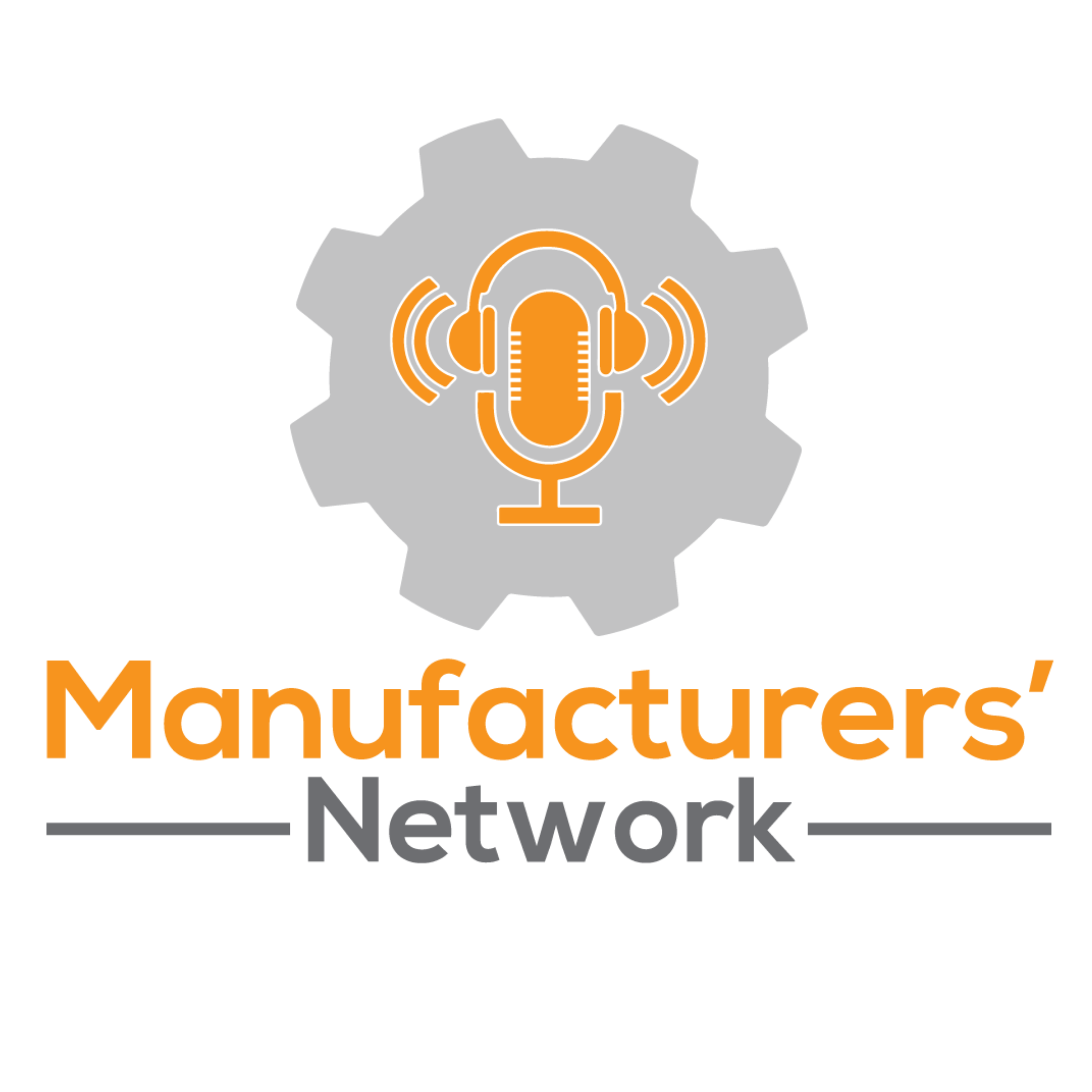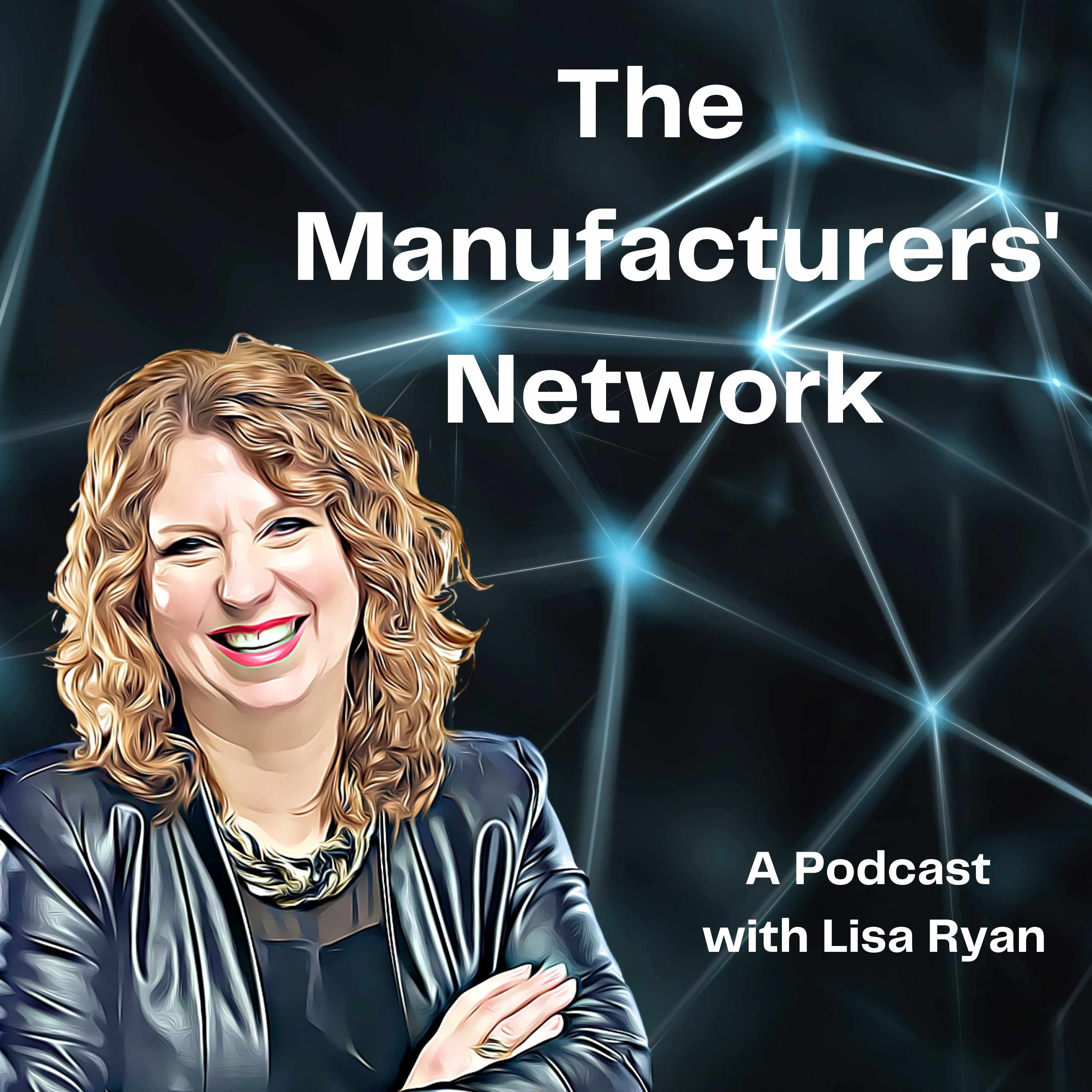Why Not Let Your Employees Do the Hiring with Sue Bingham
Connect with Sue:
Emails: sue@hpwpgroup.com
Website: https://www.hpwpgroup.com
Show Transcript:
Lisa Ryan: Hey, it's Lisa Ryan, host of the Manufacturers Network podcast. I am excited today to bring you my guest, Sue Bingham.
For more than 30 years, Sue, a human resources executive, has provided direction to companies in the transportation and logistics, pharmaceutical, aerospace, food bottling, floral, optical, textile, and medical device industries.
She's worked closely with company leaders to analyze their organizations and facilitate the implementation of common-sense systems that positively impact the organization's bottom line.
Sue is an expert at effectively using culture to form a common language across global operations, leading to greater collaboration, higher team member satisfaction levels, and increased business unit cooperation. Her passion is helping companies embrace and transition to high-performance work environments. Sue, welcome to the show. It's so good to have you today.
Sue Bingham: Thank you, Lisa.
Lisa Ryan: I know you're a former human resource executive, but kind of share with us a little bit about your journey and really what led you to what you're doing today.
Sue Bingham: My journey, as as you could tell, started in manufacturing. I was exposed relatively early on to the pretty traditional management approaches and pretty traditional HR, which is a role where we micromanage attendance records. We tell supervisors how to manage. We have lots of policies that we enforce and so on. And none of that ever felt right to me because when I was younger and the people I talked to were adults. Whether they worked in the plant or whether they worked in an office didn't matter to me. They were still adults.
I had trouble taking on some of the traditional human resource responsibilities that a traditionally managed manufacturing company had at that time. So that was my real awakening. I happened to have a mentor who led me in a different direction, who showed me an entirely different role for human resources. It was one that that was genuinely adding value in a business partner through actually having fewer policies, not more. We also recognized that everybody could be all salaried. Getting rid of the two-class system that seems to permeate manufacturing operations in particular, where you're one class of person with even different benefits and different rules if you work in the plant. If you work in the office, that's different.
So that two-class citizenship bothered me quite a bit. When I found all these ways to eliminate that by treating people as respected, responsible adults, it made a world of difference. I wanted to take that learning to more and more companies.
Lisa Ryan: So when you look at the different companies you're working with; obviously the two-class system is one of the manufacturing challenges. What are some of the biggest challenges they're facing right now?
Sue Bingham: Well, across the board and working with some of the manufacturing groups that get together and talk about their biggest problems, clearly it's staffing and retention. In recent research, I heard that there were some four hundred thousand open positions in manufacturing, which as of October and yet from last year, hiring was up. Turnover is down because people need the jobs they have and are looking for jobs. So I think the problem is that we're still doing staffing in the same old way.
Manufacturing is not getting creative at recruiting, not having a culture that causes people to be attracted to the job, using a hiring process with a certain turnover. And everybody accepts it as a cost of doing business. Right.
Lisa Ryan: Well, and I think that leads very nicely into our next conversation. One of the reasons I wanted to have you on the show was this concept that you shared with me about employees doing the hiring. So as people who are listening and their heads are about to explode right now, "what do you mean? Managers aren't doing the hiring?" I'd love you to go into the details and let people know what it looks like.
Sue Bingham: Absolutely. I think you need to start with your middle management, your leaders, in terms of challenging their assumptions about the people they manage. I mean, these are adults, and they're working side by side with every new person. And if a company is is is willing to train, and most are, especially on those entry-level jobs, it's far more essential to hire someone for their character than it is for and their personal attributes than it is for whatever experience they might have.
So the steps are that you get management, the supervisors, and managers to say tell us who your top employees are, who are your best people? I mean, you can count on them. They're always there. They go the extra mile. They're trustworthy completely. And they're innovative. They're creative. Who are those people? And they identify the five or six or seven top employees. And then we go through about a six-hour training session, which is more than most supervisors have had in hiring decisions, often more than most managers have had in manufacturing in terms of interviewing.
We get them together, and we say, tell us what you're looking for in the person working next to you. If I ask supervisors, they'll usually say some related experience and a good attendance record of getting that information. And and and that's about it. I like them if they seem like they're a good fit, and yet if you ask the people that are going to be working next to them for eight to 10 to 12 hours a day, what are you looking for it? They'll make a list of 30 to 40 attributes, like a sense of humor, has my back, learns quickly, is willing to go the extra mile, creative, funny, fun to work with - they'll have a whole list of those things. We do give them a group of behaviorally based questions that they can use to determine what questions they want to ask. We teach them how to do a team interview, which can seem daunting to a candidate and often does. For the last 20 years, our experience is that people walk out of those interviews wanting the job more than they did when they walked in. This process makes people more comfortable.
The more they work together, the stronger they are. And they ask probing questions. And at the very end of that interview, they decide whether or not to hire that employee. And that decision is made with management's counting on them to make that decision and make it a good decision. And everybody has to agree. They have to reach a consensus. They can live with the decision, even if someone's not so sure. There are obstacles with it, but the benefits are so much more significant.
Lisa Ryan: Yeah. I was thinking of it. It seems to eliminate that first day, the scary first day for the new employee because they met their boss. Maybe they saw some of the people that they'd be working within the plant. But until they go and show where their workspaces, they have no idea. Am I going to like these people? Who am I going to have lunch with? Where are the cool kids? Who do I sit with? When you have that team effort bringing them on board, not only do they feel more comfortable being around those people, but the people that they're working with have buy-in. They think that this person is because of me. Versus nobody even knows that I've been here for more than six weeks. You get ghosted at lunch because people are like, oh, God, another new or another one, why should I make friends with them? They're just going to be gone in three weeks. Well, what if you did make friends with them? Yes. Friendship caused you to stay.
Sue Bingham: Well, that's just it. And the thing is that the team members take personal responsibility for that person's success versus the supervisors who just brought in another person. We're going to have to train. They take responsibility, and we measure their success. I mean, we give them regular reports. They look at turnover numbers and so on, so forth. So there's a lot of side benefit cycle. They'll identify if a supervisor has a significant turnover issue based on style or something like that. They'll recognize it because they're very focused. Their goal is to reduce turnover in combination with hiring the very best people that are there.
Lisa Ryan: Every company I've ever worked for there seems to be like the golden child manager that is untouchable from an upper management standpoint, but they're just atrocious as a manager. But nobody has the nerve to tell them. So when you use this philosophy and open it up, create that safe environment to no one; we will listen to you if you have some legitimate gripes about what your boss is doing.
And either we're going to send that manager to training, or they're not going to be managers because that you've heard it. I mean, people don't leave their people don't quit their job. They quit their manager. We've listened to it a gazillion times. And it's up to leaders to make sure that their managers measure up to the culture they want to create.
Sue Bingham: Team members make sure of that. They will often go a step further and say to the team members, what were your challenges on the first day, and how would you suggest that we structure the first-day orientation and get them involved in that? You're empowering people at that frontline level with a significant decision that contributes to the retention of those high performers.
They're getting a much stronger sense of ownership within the company.
Yeah. You're entrusting them with a role that they probably never would have aspired to. And they never even thought that they would be instrumental in hiring the next person. You're also giving the opportunity to maybe somebody who hasn't been shining like a superstar to once they get empowered and feel a taste of that, now you're giving them the tools to make them even better job.
Well, and another benefit, I mean, we only usually do that training once. And then there's a term limit. After two months or three months, a member will rotate off but will name their successor to the team. And then, the team trains the person on the job as part of the interview process. So it's just a fantastic approach. And I want to describe the results. It reduces turnover by more than 50 percent almost immediately.
Lisa Ryan: So what would you describe then as a high performing manufacturing organization?
Sue Bingham: Well, it's one in which you can't tell who works in the plant and who works in the office other than maybe the PPE, although if they're on the floor office, people ought to be wearing their personal protective equipment. You can't tell about changing shifts, which is interesting. I've worked in large plants where, when the shift is over, there's a mass exodus converging with a mass exodus coming in. You don't really see that because people stop and talk to each other, and we don't get wrapped up in little things.
First of all, a high-performance workplace has no use for timecards. We believe people are salaried, will pay them forty hours. And if they're in a non-exempt job, they get overtime. But we're not sweating a minute here, two minutes here, and neither are they. It's so they'll talk to each other between shifts and let each one know what's what, what they need to pay attention to going through it. They greet people. I can tell when I walk into a high-performance workplace because people will look me in the eye and smile. And often that way, it sounds like little stuff, but I can also tell one that's a very traditionally managed company where you walk in, and people are looking down and nobody looks up, and nobody says anything. And by the way, you're being escorted by a management member, not by one of the team members who know the job the best or the equipment the best.
Lisa Ryan: You feel culture. You feel. You can walk into a plant, and when you think about that brand new employee or a candidate for a job coming in, and they're walking around that plant, they're thinking, "How does it feel? Do I want to work here? You know, I couldn't quite put my finger on it, but there's something off? I don't want to be there versus they see the smiles, they see the recognition.
Sue Bingham: They feel that energy even between shift change, which is such a good example. And there's not the micromanagement of every second because of the time clock. Sometimes we have to throw out these jaded management philosophies, and they're all used to create those connections. Well, they're all based on a lack of trust. And everybody's had experience with hiring bad employees. I mean, that are just bad. They're not good people. They'll steal from you, they'll lie to you, they'll cheat, they'll do whatever. And if they manage to get themselves in, you want to get them out as soon as possible. But you don't want to create a whole culture around trying to catch them. And in the process of that, dehumanize all those good people that you've hired.
And that's the crux of the philosophy that drives so many of these systems, is don't spend time on that five percenter. If you if you've made a bad hire, get them out quickly. And on the ninety-five percenters, focus your attention on them through reward and challenge and knowing that they have so much more to contribute. I often liken a traditional manufacturing organization to someone who buys a really robust computer system, but they only use one tiny part of its capacity.
That's what we do with our production employees in many traditionally managed organizations where we bring them in to do the hand, the men where manual work. But we're not using their brain at all. Right. And there's so much that they have to offer. And I'm not trying to be Pollyanna here. There is I have seen in high-performance workplaces the level of creativity and ownership. And for those looking at numbers, every metric is improved when you've got a workforce like that.
Lisa Ryan: Well, as we're getting to the end of our time together, how do people get in touch with you if they want to learn more, they want to connect with you?
Sue Bingham: They can go to our group, which is HPWPgroup.com. Go to our website. We're always happy to be in touch. Anybody can reach me and sue@HPWPgroup.com We really are involved in creating communities. And our leadership workshops typically end up forming communities from companies that have engaged in and invested in creating that high-performance workplace. So they share what their successes are, where they've stubbed their toes, and so on, may have some of their community, even though they're different industries the most.
Lisa Ryan: So thanks again so much for being my guest today. I'm Lisa Ryan and I want to thank you for tuning in to the Manufacturers Network podcast. See you next time. Thanks, Lisa.


